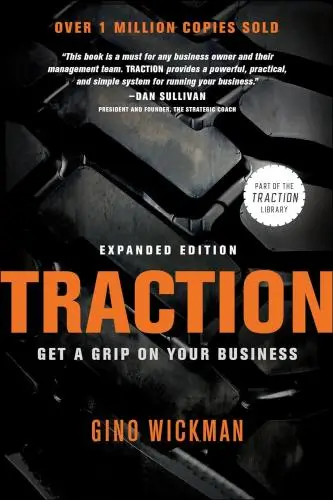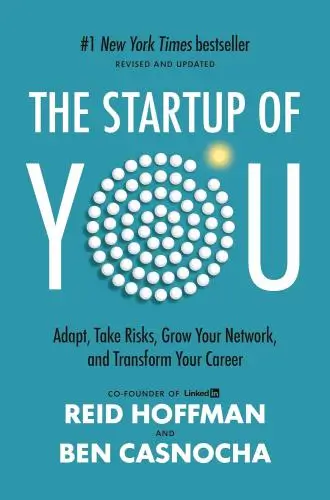
The Startup of You
Adapt, Take Risks, Grow Your Network, and Transform Your Career
What is The Startup of You about?
The Startup of You is a guide to navigating the ever-changing world of work and building a successful career. Drawing on lessons from Silicon Valley,the book emphasizes the importance of treating your career as a startup, constantly adapting, learning, and networking. With practical advice on personal branding, networking, and entrepreneurial thinking, this book will inspire you to take control of your career and thrive in today's competitive job market.
About the Author
Reid Hoffman is a tech entrepreneur, venture capitalist, and co-founder of LinkedIn. His book "Blitzscaling" explores the rapid growth strategies of successful startups. Hoffman's writing style is informative and engaging, offering valuable insights into the world of entrepreneurship and innovation. He is known for his unique perspectives on business strategies and leadership in the fast-paced tech industry.
10 Key Ideas of The Startup of You
Embrace Permanent Beta to Always Improve
Adopting a mindset of being in 'permanent beta' means you view yourself as a work in progress, always looking for ways to improve and adapt. This approach encourages continuous learning, resilience, and flexibility, which are crucial in today’s fast-changing world. By never considering yourself or your career as fully finished, you open up to new opportunities, skills, and connections that can propel you forward.
Learn DeeperSet Personal Growth Goals: Regularly identify areas in your life or career where you seek improvement. Break these down into achievable objectives, and set timelines to review and adjust them as needed.
Cultivate a Learning Habit: Dedicate time each week to learn something new, whether it's related to your current job, a hobby, or a skill you've always wanted to acquire. Online courses, podcasts, and books are great resources.
Seek Feedback Actively: Don't wait for feedback; ask for it. Reach out to colleagues, mentors, or friends to get their perspective on your work and areas where you can improve. Be open to criticism and use it constructively.
Embrace Failure as a Learning Tool: When things don't go as planned, instead of viewing it as a setback, analyze what happened. Understand what went wrong, what you could do differently next time, and how this experience can make you better.
Network with a Purpose: Build and maintain a network of contacts not just for the sake of having connections, but to learn from others. Engage with people who inspire you, can teach you new things, or offer different perspectives.
- Example
Imagine you're a graphic designer who primarily works with print media. To stay relevant and improve, you decide to learn web design. You set a goal to complete an online course in three months, practice by redesigning a friend's blog, and seek feedback from experienced web designers.
- Example
You're a project manager noticing that your projects have been running over budget recently. Instead of brushing it off as a phase, you take it as a cue to improve your budget management skills. You enroll in a financial management workshop, start using a new project budgeting tool recommended by a mentor, and review past projects to identify where estimates went wrong.
Invest in Yourself Through Continuous Learning
Continuous learning is the key to staying relevant and competitive in any industry. Investing time and resources into acquiring new skills, knowledge, and experiences not only enhances your current performance but also prepares you for future opportunities and challenges. This could involve taking courses, attending workshops, reading extensively, or seeking mentorship. The goal is to keep expanding your skill set and adaptability.
Learn DeeperSet aside dedicated learning time each week: Just as you might schedule workouts or social events, block out time in your calendar for learning. This could be an hour a day or a few hours over the weekend, depending on your schedule.
Choose diverse learning platforms: Don't limit yourself to one form of learning. Combine online courses, podcasts, books, and even documentaries to cover a wide range of topics and learning styles.
Apply new knowledge immediately: Whenever you learn something new, think of a small project or task where you can apply this knowledge. Real-world application will reinforce what you've learned and show its practical value.
Join a learning community: Whether it's an online forum, a local workshop, or a study group, being part of a community can provide motivation, diverse perspectives, and opportunities for collaboration.
Reflect and adjust regularly: Every few months, take some time to reflect on what you've learned and how it has impacted your personal or professional life. Use this reflection to adjust your learning goals and methods accordingly.
- Example
If you're working in marketing but interested in data science, you might start by dedicating two hours every Saturday to an online course in data analytics. To apply this, you could then analyze your company's marketing data with your new skills.
- Example
Imagine you're a graphic designer wanting to expand into user experience (UX) design. You could listen to UX podcasts during your commute and join a local UX design meetup to discuss ideas and projects with peers, applying what you learn to volunteer or freelance projects.
Build a Diverse Network Before You Need It
Networking shouldn’t be a reactive strategy, initiated only when you need something. Instead, proactively building a diverse and robust network provides a support system, offers access to new opportunities, and enriches your personal and professional life. A strong network consists of relationships built on mutual trust and value exchange, not just superficial connections. Regularly engage with your network, offer help, and share knowledge to strengthen these bonds.
Learn DeeperStart with Your Existing Network: Begin by reaching out to people you already know, such as friends, family, and former colleagues. Ask them about their projects and share your own. This mutual exchange of information can lead to new connections.
Engage Regularly on Professional Platforms: Use platforms like LinkedIn to connect with industry professionals. Share articles, comment on posts, and participate in discussions to make your presence known and valuable.
Attend Industry Events: Whether online or in-person, attending conferences, seminars, and networking events related to your field can introduce you to new people and ideas. Make it a point to speak with speakers and attendees.
Offer Help Before Asking for It: Whenever you interact with someone in your network, think about how you can help them. This could be as simple as offering feedback, making an introduction, or sharing a resource. This approach builds goodwill and strengthens your relationships.
Stay in Touch: Don’t just reach out to your network when you need something. Send regular updates about your progress, congratulate them on their achievements, and share interesting finds. This keeps the relationship alive and reciprocal.
- Example
Imagine you're interested in transitioning into a new industry. You start by joining LinkedIn groups related to this field and actively participate in discussions. Over time, you offer advice based on your current expertise and ask insightful questions. This leads to a connection inviting you to a virtual seminar, where you meet a potential mentor.
- Example
You're a recent graduate looking to break into your chosen field. You begin by reaching out to alumni from your university who are currently working in that industry, asking for informational interviews. During these conversations, you focus on learning from their experiences and ask how you can assist them, perhaps by helping with research or a project they mentioned. This approach not only expands your knowledge but also solidifies your relationships.
Apply the ABZ Planning Framework to Your Career
The ABZ Planning Framework is a strategic approach to career planning. Plan A is your current trajectory, Plan B is a pivot or an alternative path closely related to Plan A, and Plan Z is a fallback scenario or safety net. This framework encourages flexibility and preparedness for change, allowing you to adapt to unforeseen circumstances while having a clear direction. Regularly reassess and adjust your plans as needed to navigate your career effectively.
Learn DeeperIdentify Your Plan A: Start by clearly defining your current career path or trajectory. What are your goals, and what steps are you taking to achieve them? Write these down to have a clear vision of your Plan A.
Brainstorm Your Plan B: Think about related paths or pivots you could make from your current trajectory. This could involve shifting industries, learning new skills, or even starting a side project. Ensure it's something feasible yet exciting enough to motivate you.
Outline Your Plan Z: Your Plan Z is your safety net. Consider what you would do if both Plan A and Plan B fell through. This might involve saving a certain amount of money as a financial cushion, or having a list of fallback job options that you're qualified for.
Regularly Review and Adjust Your Plans: Set a schedule to regularly review your ABZ plans. Life changes, and so will your interests, opportunities, and the market. Be prepared to adjust your plans accordingly to stay on track towards your career goals.
- Example
Example 1: Sarah is a marketing coordinator (Plan A) who aspires to become a chief marketing officer. Her Plan B involves pivoting to a content strategy role, which allows her to build a diverse skill set while staying in her field. For her Plan Z, she has built up a six-month emergency fund and identified freelance content creation as a viable fallback.
- Example
Example 2: Alex is a software engineer working in a startup (Plan A). His Plan B is to transition into product management within the tech industry, leveraging his technical background and interest in product development. As a Plan Z, Alex has kept his coding skills sharp for freelance projects and maintains a network of contacts in various tech companies.
Deeper knowledge. Personal growth. Unlocked.
Unlock this book's key ideas and 100+ more. Learn with quick, impactful summaries.
Read Full SummarySign up and read for free!
The Startup of You Summary: Common Questions
Experience Personalized Book Summaries, Today!
Discover a new way to gain knowledge, and save time.
Sign up for our 7-day trial now.
No Credit Card Needed

Similar Books

The Millionaire Fastlane
MJ DeMarco
Losing My Virginity
Richard Branson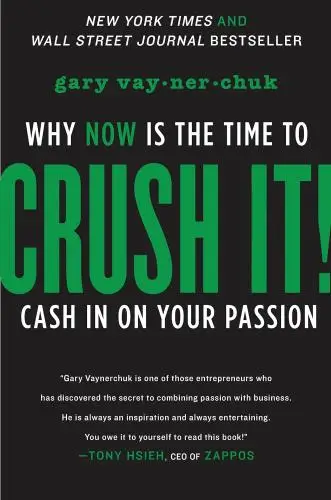
Crush It!
Gary Vaynerchuk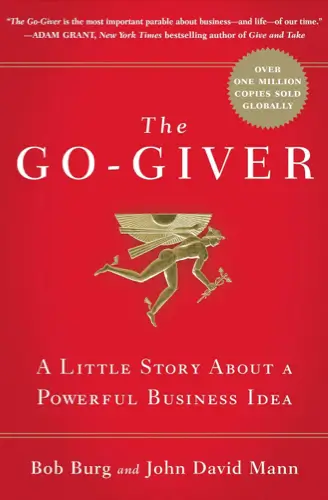
The Go-Giver
Bob Burg
Flow
Mihaly Csikszentmihalyi
Range
David Epstein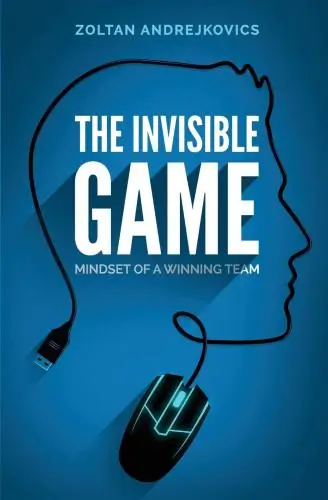
The Invisible Game
Zoltan Andrejkovics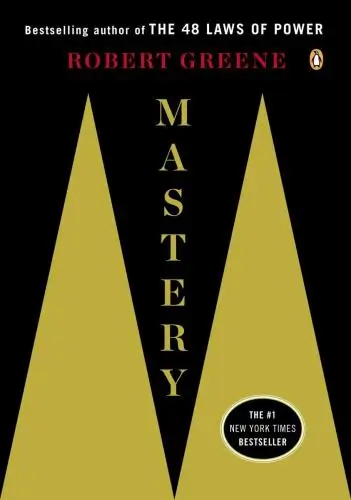
Mastery
Robert Greene
How Will You Measure Your Life?
Clayton M. Christensen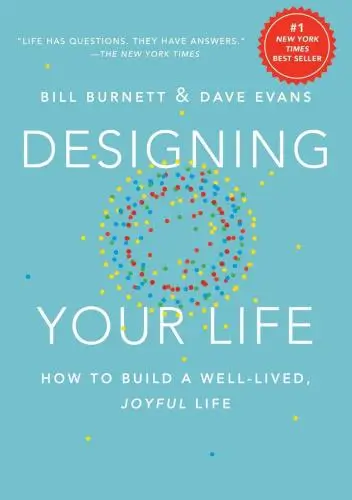
Designing Your Life
Bill Burnett
Lean In
Sheryl Sandberg
StrengthsFinder 2.0
GallupTrending Summaries

Peak
Anders Ericsson
Never Split the Difference
Chris Voss
Smart Brevity
Jim VandeHei
The Psychology of Money
Morgan Housel
The First 90 Days
Michael D. Watkins
Atomic Habits
James Clear
Thinking, Fast and Slow
Daniel Kahneman
The Body Keeps the Score
Bessel van der Kolk M.D.
The Power of Regret
Daniel H. Pink
The Compound Effect
Darren Hardy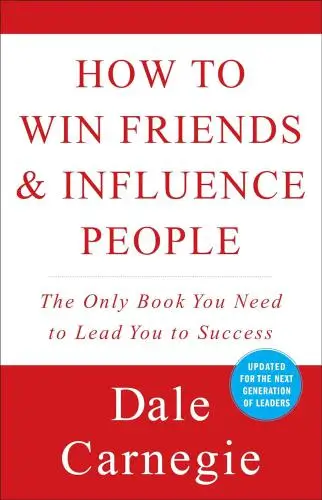
How to Win Friends & Influence People
Dale Carnegie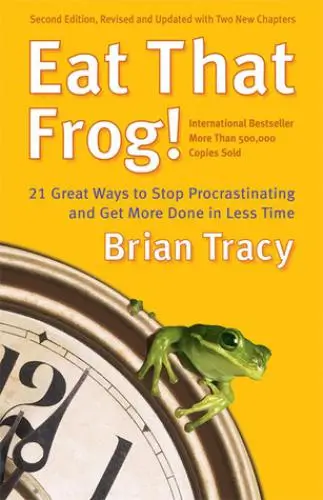
Eat That Frog!
Brian Tracy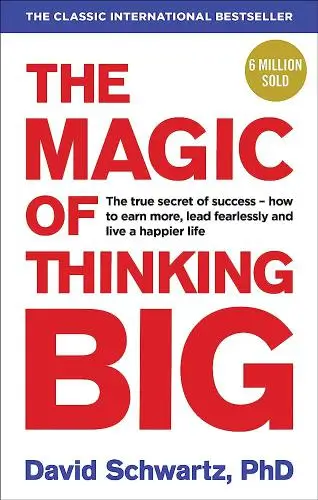
The Magic of Thinking Big
David J. Schwartz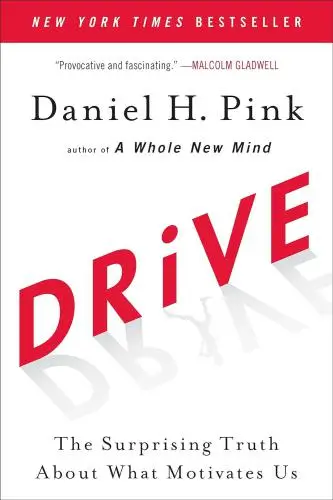
Drive
Daniel H. Pink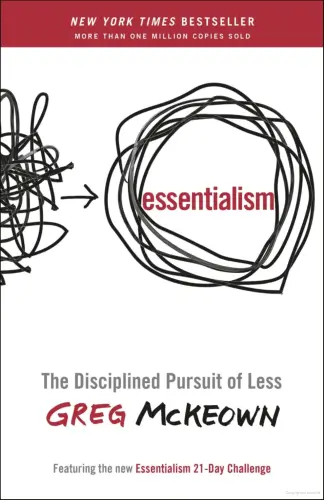
Essentialism
Greg McKeownNew Books

The Millionaire Fastlane
MJ DeMarco
Losing My Virginity
Richard Branson
Venture Deals
Brad Feld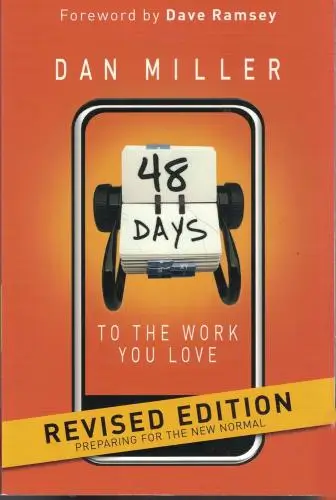
48 Days to the Work You Love
Dan Miller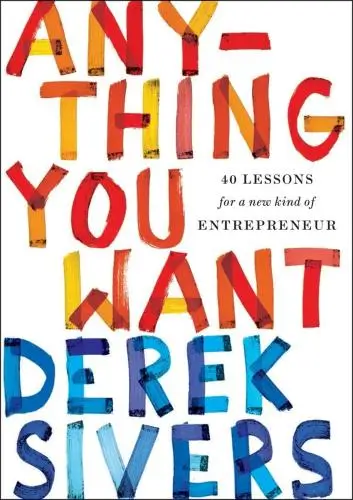
Anything You Want
Derek Sivers
Running Lean
Ash Maurya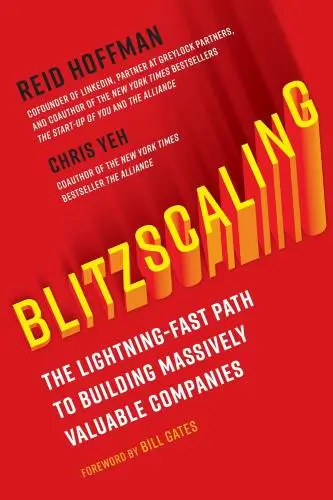
Blitzscaling
Reid Hoffman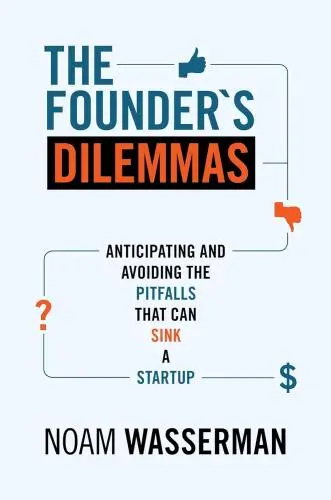
The Founder's Dilemmas
Noam Wasserman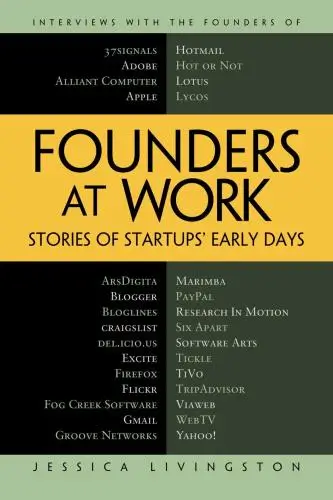
Founders at Work
Jessica Livingston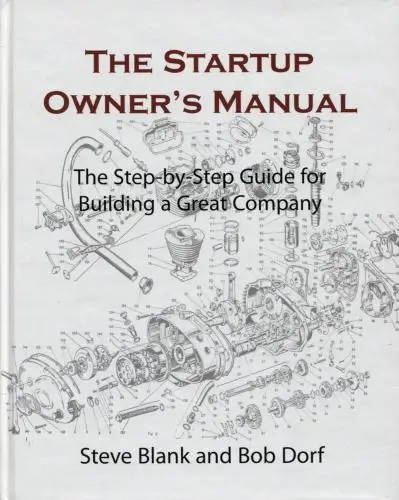
The Startup Owner's Manual
Steve Blank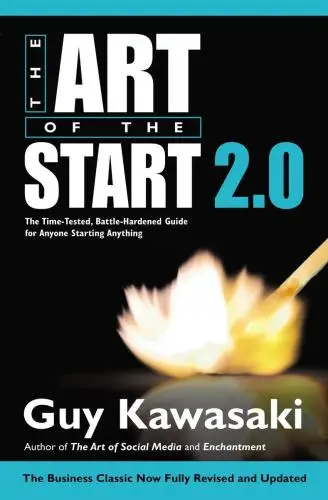
The Art of the Start 2.0
Guy Kawasaki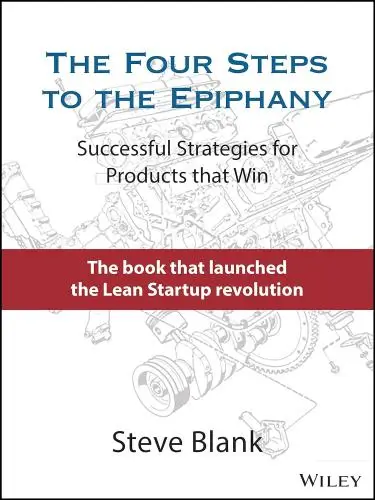
The Four Steps to the Epiphany
Steve Blank
Flash Boys
Michael Lewis
Crush It!
Gary Vaynerchuk